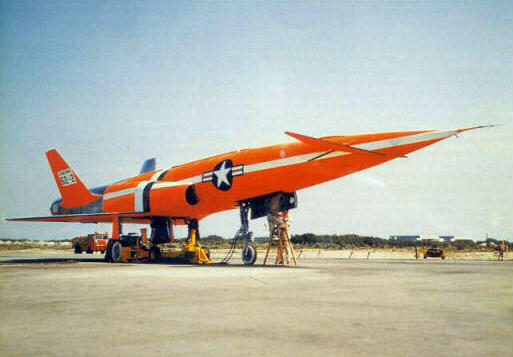NAVAHO X-10 FACT SHEET
By Cliff Lethbridge

Navaho X-10 On Cape Canaveral Skid Strip, Photo Courtesy U.S. Air Force
Classification: Surface-to-Surface Cruise Missile Prototype
Length: 87 feet, 4 inches
Wingspan: 40 feet, 3 inches
Diameter: 6 feet
Date of First Cape Canaveral Launch: August 19, 1955
Date of Final Cape Canaveral Launch: January 26, 1959
Number of Cape Canaveral Launches: 15
The Navaho program was born in 1947 as part of a plan to create an unmanned winged cruise missile which could fly a desired range of 5,500 miles. Considered the most advanced aircraft under design at the time, a contract for production and testing of Navaho missiles was granted to North American Aviation. The first version of the Navaho was designated the Navaho X-10. The X-10 series was produced to test the missile’s canard aerodynamics, flight control system, inertial guidance, advanced honeycomb structure plus new materials and equipment. The recoverable Navaho X-10 carried retractable landing gear, and was launched like a conventional aircraft. Navaho X-10 vehicles were launched from the skid strip at Cape Canaveral. Upon completing their test flights, the vehicles simply flew back for a landing. Following cancellation of the Navaho program, surplus X-10 vehicles were used as target drones during surface-to-air missile tests. The re-useable X-10 vehicles were, of course, not destroyed during these missions and returned for a landing as designed.


